Excessive phytoplankton blooms
There is concern about the effects of nutrients in aquaculture pond effluents on natural waters. This concern arises because nitrogen and phosphorus are contained in pond effluents, and these two nutrients can cause eutrophication of natural waters. In eutrophication, nutrient inputs to water bodies increase nutrient concentrations and cause dense phytoplankton blooms.
Phytoplankton blooms increase natural productivity of waters, but too much productivity can lead to an excessive demand for dissolved oxygen and cause chronically low dissolved oxygen concentrations. Low dissolved oxygen can result in the loss of ecologically sensitive fauna and lessen biodiversity. Dense phytoplankton blooms also diminish the natural beauty of water bodies, they sometimes cause taste and odor problems in drinking water and off-flavor in aquatic organisms, some species of phytoplankton may be toxic to other forms of aquatic life, and dead or moribund scums of algae may drift to the shore and cause bad odors in the surroundings.
Thus, one objective of most water pollution abatement programs is to limit nitrogen and phosphorus concentrations in effluents to minimize the danger of eutrophication in natural waters. Several management practices contained in the Global Aquaculture Alliance “Codes of Practice for Responsible Shrimp Farming’ were selected because they will reduce nutrient inputs to natural waters in the vicinity of shrimp farms.
Sources of nutrients
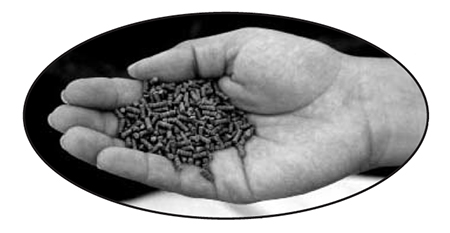
Nutrients in aquaculture pond effluents mainly come from fertilizers and feeds applied to ponds to stimulate the production of the culture species. Organic fertilizers, e.g., animal manures or other agricultural byproducts, are sometimes applied to ponds. These materials contain nitrogen and phosphorus that are released into the water as the organic fertilizer is decomposed by microbes. Chemical fertilizers, e.g. urea, triple superphosphate, diammonium phosphate, mixed fertilizers, etc., dissolve in water to release nitrogen and phosphorus.
Feeds also contain nitrogen and phosphorus. Some of the nitrogen and phosphorus in feeds enter the water when unconsumed feed and feces decompose, and more is added when ammonia is excreted by the culture species. Organic nitrogen and phosphorus are both present in the water as a component of living plankton and soluble organic matter. Inorganic nitrogen is dissolved in the water primarily as ammonia nitrogen and nitrate. Inorganic phosphorus in water may be contained on suspended mineral (soil) particles or in soluble phosphate.
Phytoplankton and other plants use ammonia nitrogen, nitrate, and soluble inorganic phosphorus for growth. However, nitrogen and phosphorus contained in dead particulate organic matter or soluble organic matter in the water may be transformed by microbial decomposition to ammonia nitrogen, nitrate, or phosphate. Because organic nitrogen and phosphorus can be transformed to soluble inorganic form by microbes, the eutrophication potential of pond effluents increases as the total concentration of nitrogen and phosphorus increases.
In ponds with heavy plankton blooms, most of the nitrogen and phosphorus may be contained in plankton and detritus rather than in soluble form. Effluents from a pond with low concentrations of ammonia nitrogen, nitrate, and phosphate, but with high plankton abundance, may still have as great a pollution potential as an effluent with high concentrations of ammonia, nitrogen, nitrate, and phosphate. This results because the organic matter (plankton, detritus, and soluble organic matter) that enters natural waters via pond effluent will decompose and release ammonia nitrogen, nitrate, and phosphate.
Impact of feed conversion ratio
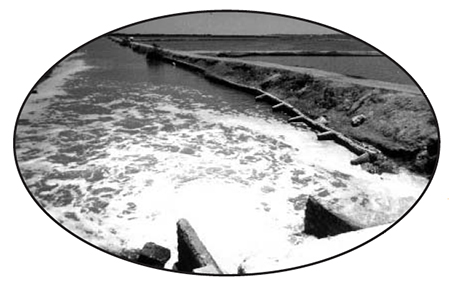
Many shrimp farmers may not think that pond effluents contain much nitrogen and phosphorus because they do not use organic fertilizers, they use chemical fertilizers sparingly and only near the beginning of the culture period, and the feed conversion ratio (FCR) is good.
Some shrimp farmers obtain an FCR as low as 1.5. This means that 1.5 kg of shrimp feed results in the production of 1 kg of shrimp. The conclusion may be that only 0.5 kg of waste is generated in the production of 1 kg of shrimp. Even if the FCR is as high as 2, the farmer might think that only 1 kg of waste is released in the production of 1 kg of shrimp.
The relationship among feed input, shrimp production, and waste generation will be analyzed more carefully. The feed used in aquaculture normally is a dry pellet. Shrimp feed contains about 90 percent dry matter and 10 percent water. Shrimp, on the other hand, contain about 25 percent dry matter and 75 percent water. Thus, in the production of 1 kg of shrimp with 1.5 kg of feed (FCR of 1.5), 1.35 kg dry matter in feed yields 0.25 kg dry matter in shrimp. From an ecological point of view, 1.35 kg (1.5 kg feed, 0.9) dry nutritive substance has to be used to produce 0.25 kg (1 kg shrimp, 0.25) of dry matter in shrimp. Thus, the dry matter conversion ratio is only 5.4 (1.35 kg dry feed, 0.25 kg dry shrimp). The ratio of shrimp to wastes of 1:0.5 based on the usual method for estimating feed conversion ratio is an apparent ratio, but the true ratio based on dry matter is 1:4.4.
Boyd, Table 1
| Production | N (kg/ha) | P (kg/ha) |
|---|---|---|
| 500 | 6.3 - 10.5 | 0.9 - 1.8 |
| 1,000 | 12.6 - 21 | 1.8 - 3.6 |
| 2,000 | 25.2 - 42 | 3.6 - 7.2 |
| 3,000 | 37.8 - 63 | 5.4 - 10.8 |
| 4,000 | 50.4 - 84 | 7.2 - 14.4 |
Suppose that a shrimp feed contains 35 percent crude protein and 1.2 percent phosphorus. Crude protein is estimated as percentage nitrogen multiplied by 6.25, so this feed has 5.6 percent N, and 1.5 kg of this feed contains 84 g nitrogen (1,500 grams of feed × 0.056) and 18 grams phosphorus (1,500 g feed × 0.012). The 1 kg of shrimp produced by the feed will contain 0.25 kg dry matter, and shrimp dry matter is about 11 percent nitrogen and 1.25 percent phosphorus. It follows that 27.5 g nitrogen (250 g dry shrimp × 0.11) and 3 g phosphorus (250 grams of dry shrimp × 0.0125) are contained in the shrimp.
The differences between the amounts of nitrogen and phosphorus in the feed and in the harvested shrimp represent the amount of nitrogen and phosphorus entering the pond water. In this example, each kilogram of live shrimp would result in 56.5 g nitrogen and 15 g of phosphorus in wastes. On a per ton basis, this would be 56.5 kg nitrogen and 15 kg phosphorus.
Natural losses of nutrients
In a pond without water exchange, much of the nitrogen and phosphorus will be removed from the water. Nitrogen will be lost to the air by volatilization of ammonia and by microbial denitrification. Some nitrogen will be contained in organic matter deposited in the pond bottom, and phosphorus will be absorbed by sediment. Recent studies suggested that about 50 percent of the nitrogen and 65 percent of the phosphorus added in feed could be removed from the water of a pond without water exchange through physical, chemical, and biological processes.
Considering that about 25 to 35 percent of the nitrogen and 15 to 25 percent of phosphorus added in feed is recovered in shrimp at harvest, only 15 to 25 percent of the nitrogen and 10 to 20 percent of the phosphorus applied in feed would be lost in effluent at pond draining. Of course, with water exchange, there would be a greater loss of nitrogen and phosphorus in effluents, because more nitrogen and phosphorus would be flushed out of ponds before being removed by natural purification processes within the pond.
Estimates of N and P outputs
Even in a pond with zero water exchange, the loss of nitrogen and phosphorus at pond draining might be 12.6 to 21 kg nitrogen and 1.8 to 3.6 kg phosphorus where 1 ton of shrimp is produced at an FCR of 1.5 (see example below). For different levels of production, the nitrogen and phosphorus outputs might be as follows:
These are rather large amounts of nitrogen and phosphorus, and the effluents from aquaculture can be a threat to cause eutrophication of natural waters into which they are discharged. Management Recommendations Several measures can be taken to avoid or minimize eutrophication:
- Minimize water exchange. By retaining water in ponds for a longer time, there is greater opportunity for removal of nitrogen and phosphorus by natural processes.
- Use a high quality feed. A feed that is water stable can be eaten more completely by shrimp. Also, a high quality feed results in less feces and metabolic waste.
- Use feeds with the lowest nitrogen and phosphorus concentrations that are compatible with good feed quality. This will minimize the amount of nitrogen and phosphorus in wastes.
- Feed conservatively. It is important for the shrimp to eat all of the feed put into ponds for both economic and environmental reasons.
- When draining ponds, try to minimize the velocity of outflowing water so that sediment is not resuspended from pond bottoms. This will reduce the amount of organic nitrogen and phosphorus in effluents by retaining organic particles within the pond.
- Maintain good dissolved oxygen concentrations in ponds by not stocking and feeding too much. Properly loaded ponds can assimilate most of the wastes. Aerated ponds can assimilate much more waste than unaerated ponds.
- Dry pond bottoms and lime acidic bottom soils between harvests to favor organic matter decomposition. This will reduce the accumulation of organic matter in bottom soils.
(Editor’s Note: This article was originally published in the December 1999 print edition of the Global Aquaculture Advocate.)
Now that you've reached the end of the article ...
… please consider supporting GSA’s mission to advance responsible seafood practices through education, advocacy and third-party assurances. The Advocate aims to document the evolution of responsible seafood practices and share the expansive knowledge of our vast network of contributors.
By becoming a Global Seafood Alliance member, you’re ensuring that all of the pre-competitive work we do through member benefits, resources and events can continue. Individual membership costs just $50 a year.
Not a GSA member? Join us.
Author
-

Claude E. Boyd, Ph.D.
Professor
Department of Fisheries and Allied Aquaculture
International Center for Aquaculture and Aquatic Environments
Auburn University, AL 36849-5419 USA[117,100,101,46,110,114,117,98,117,97,64,49,101,99,100,121,111,98]
Tagged With
Related Posts
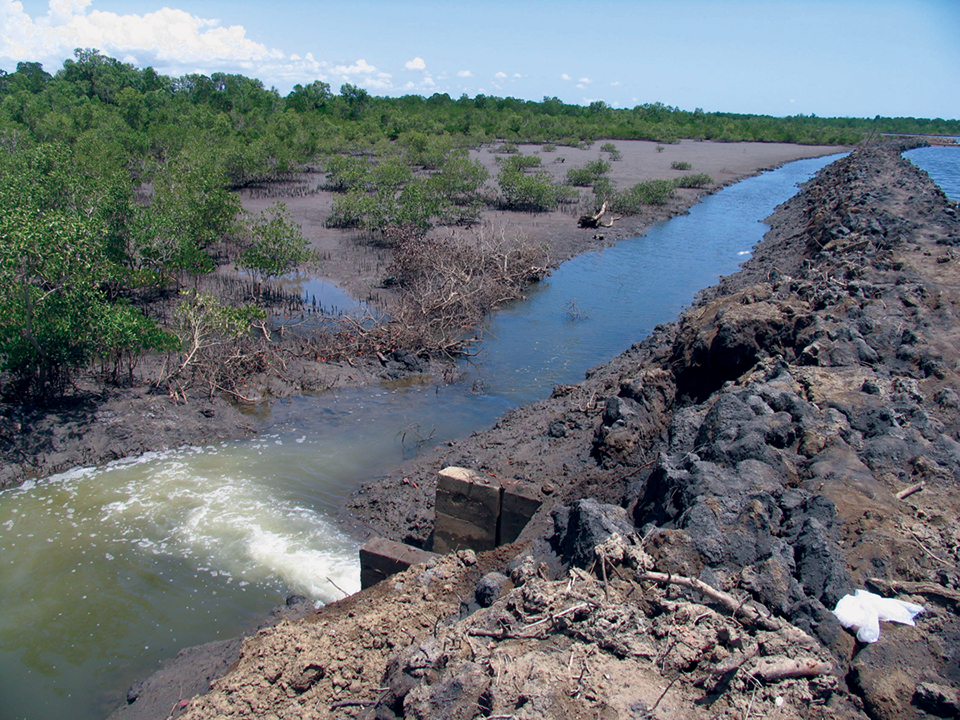
Responsibility
Best management practices minimize impacts of aquaculture effluents
Both aquaculture effluents and production costs can be reduced by using stock-specific feeds applied in smaller quantities several times a day.
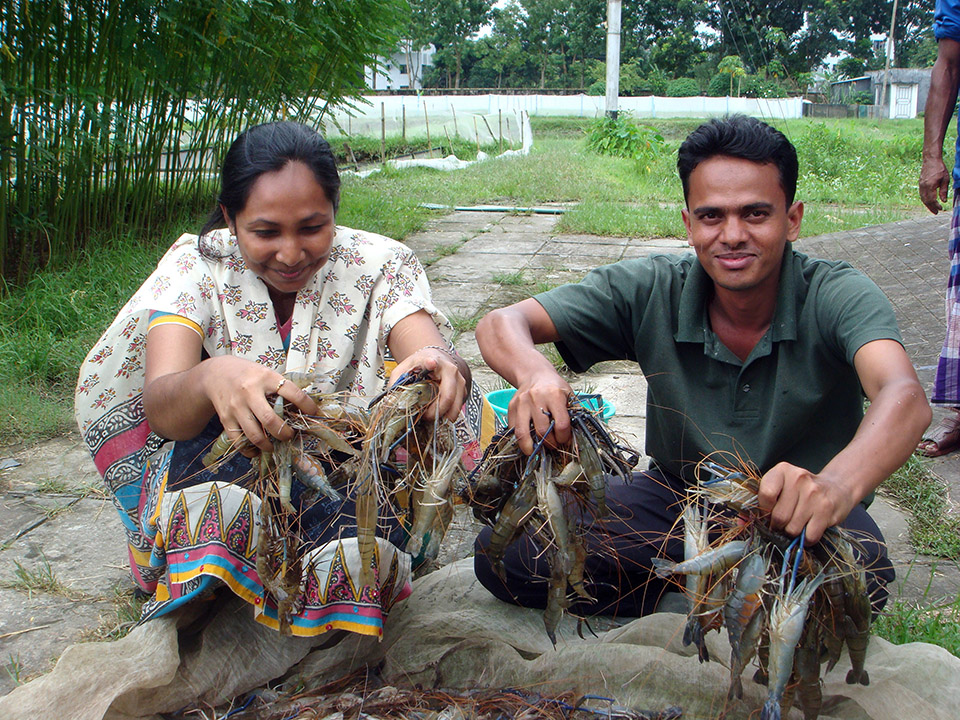
Responsibility
C:N-controlled, periphyton system boosts production in stagnant ponds
The adoption of polyculture systems with controlled carbon:nitrogen ratios and substrates for periphyton development can improve utilization of the aquatic food webs in stagnant ponds.
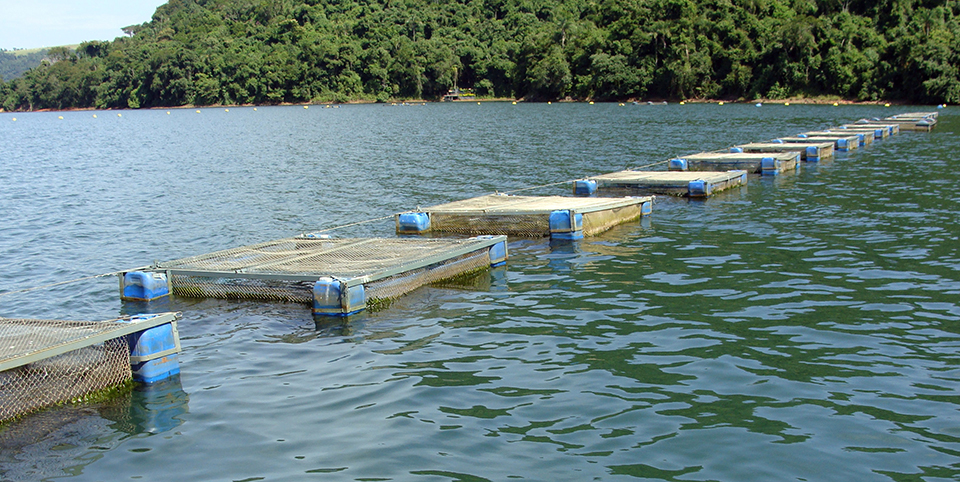
Responsibility
Load models support sustainable aquaculture planning for Brazil’s reservoirs
Cage aquaculture in hydroelectric reservoirs has great potential for expansion in Brazil, but there are concerns of negative environmental impacts. Careful climate zoning can assist proper siting.
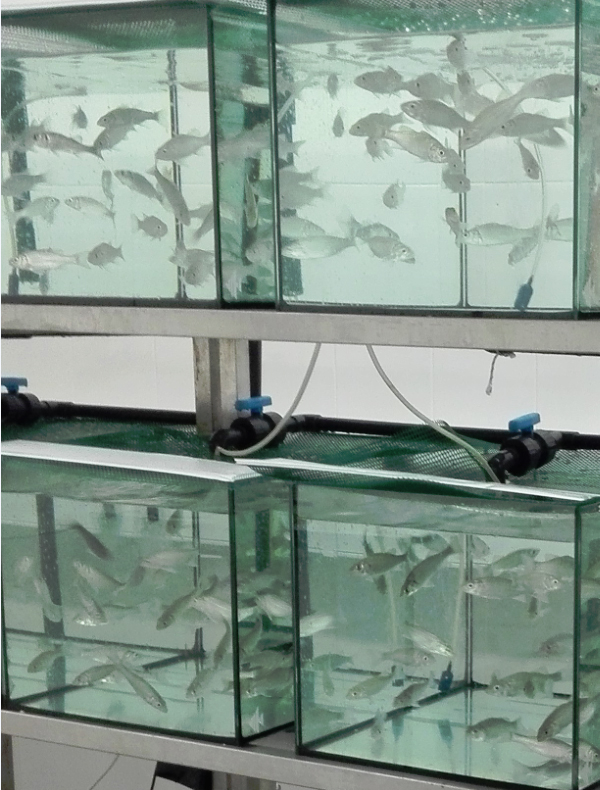
Health & Welfare
Prebiotics and their role in sustainable aquaculture
Results of a study to evaluate a commercial prebiotic on growth of European sea bass juveniles indicates this product can improve fish growth performance and allowing for the fish to reach the marketable size earlier, boosting their immune status, and reducing potential fish losses due to pathogens.

